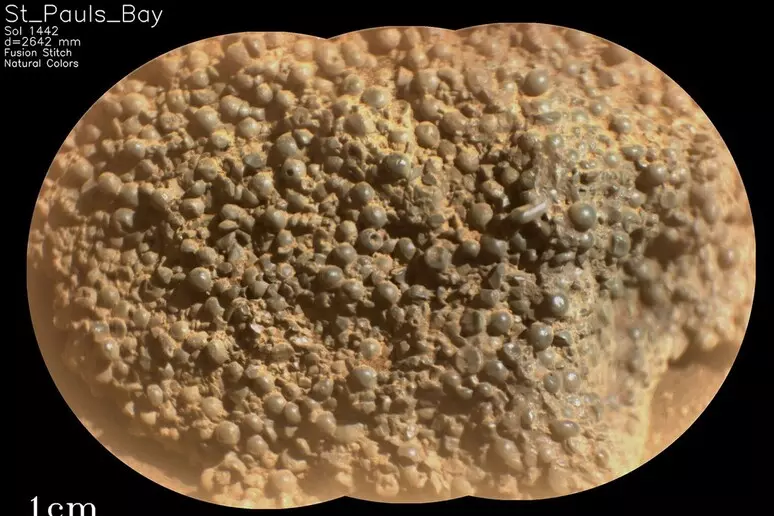Mars continues to attract the interest of geologists and researchers thanks to a new discovery: NASA’s Perseverance rover, which has been engaged in the exploration of the Red Planet since 2021, has spotted and photographed a strange rock formation composed of hundreds of spheres barely a millimeter in diameter, some of which have holes almost invisible to the human eye.
The discovery occurred while the vehicle was exploring the rim of Jezero crater, an area that, according to currently available data, once formed the bottom of an ancient lake. However, scientists believe this unusual specimen does not to belong to the surrounding environment, as it shows very different morphological and structural features than those observed in the same area.
It is still unclear why this formation is found near the crater, but it is speculated that it may have come from other regions of the planet. In support of this theory, the researchers cite previous observations by the Opportunity and Curiosity rovers, which in past years identified similar structures near Endurance and Gale craters.

As for the possible origin, scholars suggest that, just as in the other areas, the spheres may have formed as a result of the passage of groundwater through the pores of the ore. However, they do not rule out a volcanic origin: in this case, the small spheres could be the result of the rapid cooling of magma droplets during an eruption, or the condensation of vaporized material from meteorite impacts.
“Each of these formation mechanisms would have very different implications for the evolution of these rocks,” the mission team explained in a note posted on NASA’s website. Experts are currently working to trace the origin of the sample back to the Martian environment, with the goal of clarifying its role in the geologic history of Jezero crater.












